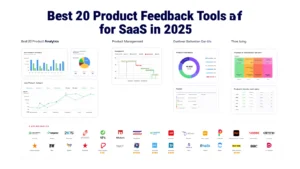In today’s competitive marketplace, connecting with consumers on an emotional level is more important than ever. One of the most effective ways to achieve this connection is through brand storytelling. By crafting and sharing compelling stories, brands can build strong relationships with their audience, foster loyalty, and stand out from the competition. In this blog, we will explore the concept of brand storytelling, its importance, key elements, and how to create a powerful brand story. We will also look at examples of successful brand storytelling and how to use it in marketing.
What is Brand Storytelling?
Brand storytelling is the art of using narrative to communicate a brand’s values, mission, and message to its audience. It goes beyond traditional advertising by creating a narrative that resonates emotionally with consumers. Through stories, brands can illustrate their purpose, share their journey, and highlight what makes them unique. This approach helps to humanize the brand and make it more relatable to the audience.
Why Brand Storytelling is Important?
Brand storytelling is important for several reasons:
Builds Emotional Connections
Stories have the power to evoke emotions and create a deep connection with the audience. When consumers feel emotionally connected to a brand, they are more likely to trust and remain loyal to it.
Differentiates the Brand
In a crowded market, a compelling brand story can set a brand apart from its competitors. It highlights the brand’s unique values and personality, making it more memorable.
Increases Engagement
Stories are inherently engaging and can capture the audience’s attention more effectively than traditional advertising. A well-told story can inspire action and encourage consumers to share it with others.
Builds Brand Loyalty
When consumers connect with a brand’s story, they are more likely to become loyal advocates. This loyalty translates into repeat business and positive word-of-mouth marketing.
Key Elements of Powerful Brand Storytelling
To create a powerful brand story, it’s essential to include several key elements:
- Authenticity: The story should be genuine and reflect the true values and mission of the brand. Authenticity builds trust and credibility.
- Relatability: The audience should be able to relate to the story. It should address their needs, challenges, and aspirations.
- Emotional Appeal: A good story evokes emotions. Whether it’s joy, inspiration, or empathy, the emotional connection helps to make the story memorable.
- Clear Message: The story should convey a clear and concise message about the brand’s values, mission, and what it stands for.
- Consistency: The brand story should be consistent across all channels and touchpoints. Consistency reinforces the brand’s identity and message.
How to Create a Brand Story?: Step-by-Step Guide
Creating a compelling brand story involves several steps:
- Define Your Purpose: Start by identifying the core purpose of your brand. What are your mission, values, and goals? Understanding your purpose will guide the narrative.
- Know Your Audience: Research and understand your target audience. What are their needs, desires, and pain points? Knowing your audience will help you create a story that resonates with them.
- Identify Your Unique Selling Proposition (USP): Determine what sets your brand apart from competitors. Your USP should be a central theme in your story.
- Create a Character: Every good story has a protagonist. In brand storytelling, this could be your brand, your customers, or even a fictional character that represents your audience.
- Craft the Narrative: Develop a narrative that includes a beginning, middle, and end. The beginning introduces the character and setting, the middle presents a challenge or conflict, and the end shows the resolution and the brand’s role in it.
- Use Visuals: Incorporate visuals such as images, videos, and graphics to enhance the storytelling experience. Visuals make the story more engaging and easier to remember.
- Share Across Channels: Distribute your brand story across various channels, including your website, social media, email campaigns, and advertisements. Consistency is key to reinforcing your message.
Brand Storytelling Examples
Brand storytelling can transform a brand’s image and create deep, emotional connections with its audience. Here are some detailed examples of successful brand storytelling:
Nike
Nike’s brand storytelling often focuses on inspiring stories of athletes overcoming obstacles. Their “Just Do It” campaign features real-life stories of perseverance and triumph, connecting emotionally with their audience.
Airbnb
Airbnb’s brand story revolves around the idea of belonging anywhere. They share stories of hosts and travelers to highlight the unique and personal experiences that their platform offers.
Coca-Cola
Coca-Cola’s storytelling emphasizes happiness and togetherness. Their campaigns often feature joyful moments of people sharing a Coke, reinforcing the brand’s message of spreading happiness.
How to Use Brand Storytelling in Marketing?
Integrating brand storytelling into your marketing efforts can amplify its impact:
- Content Marketing: Use blog posts, videos, and social media content to share your brand story. Create content that reflects your narrative and engages your audience.
- Advertising: Incorporate storytelling into your advertisements. Rather than just promoting products, tell a story that highlights your brand’s values and mission.
- Social Media: Social media is a powerful platform for storytelling. Share stories, user-generated content, and behind-the-scenes glimpses to connect with your audience.
- Customer Testimonials: Share stories from satisfied customers. Testimonials and case studies provide real-life examples of how your brand has made a positive impact.
- Email Campaigns: Use email campaigns to share different aspects of your brand story. Personalized emails that tell a story can foster a deeper connection with your subscribers.
Final Words
Brand storytelling is a powerful tool that helps brands connect with their audience on an emotional level. By creating and sharing compelling stories, brands can build stronger relationships, differentiate themselves from competitors, and foster loyalty.
At Pearl Lemon Experiences, our team is dedicated to helping brands craft impactful brand stories that resonate with their audience and achieve their marketing goals. Through authenticity, emotional appeal, and consistent messaging, brands can use storytelling to create meaningful and lasting connections with their consumers.
FAQs
Brand storytelling helps build emotional connections, differentiate the brand from competitors, increase engagement, and foster customer loyalty.
Start by defining your brand’s purpose, understanding your audience, identifying your unique selling proposition, and crafting a narrative that includes a beginning, middle, and end.
Yes, brand storytelling can be a powerful tool for businesses of all sizes. It helps small businesses build strong relationships with their audience and stand out in the market.
Develop a clear and concise brand message and ensure that all marketing materials, from social media posts to advertisements, align with this message.
Measure success through metrics such as audience engagement, social media shares, website traffic, and customer feedback to evaluate the impact of your brand story.





